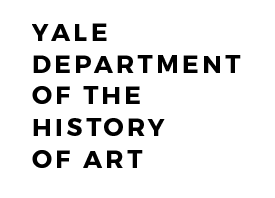Morgan Ng
BArch, Cornell University
PhD, Harvard University
Morgan Ng is a historian of Renaissance architecture, landscape, and visual culture specializing in fifteenth- and sixteenth-century Italy and its global networks. His scholarship explores the interplay between art and technology; the multisensory perception of the built environment; ecological approaches to architecture; theories of form; problems of historical periodization; and the relationship of the graphic arts to building design and practice.
A driving concern of his research is the conceptualization and interpretation of what he terms “cognate technologies”: artifacts often distinct in style and function yet connected by deep formal and structural kinships. This project coalesces in his book Form and Fortification: The Art of Military Architecture in Renaissance Italy (Yale University Press, 2025). The study probes the close morphological links between fortifications and other works of sixteenth-century art and design: palaces, gardens, and urban infrastructure.
Much of Ng’s research strives to bridge the medieval and early modern scholarly divide. This ambition motivates his current book project, which traces the survival and transformation of earlier graphic techniques in the emergent Renaissance practice of architectural drawing on paper. Research toward this project has been supported by Membership at the Institute for Advanced Study in Princeton.
Other publications have appeared in edited volumes and journals such as Art History, Word & Image, and the Journal of the Society of Architectural Historians, covering such topics as early modern architectural glass, sculptural illumination, print culture, cartography, and earthquakes. Before coming to Yale, Ng was a Junior Research Fellow at St John’s College, University of Cambridge, and a postdoctoral scholar at the Getty Research Institute. He has also worked as an architect in New York and Chicago.
RECENT AND FORTHCOMING PUBLICATIONS (more available here):
“Le fortificazioni di Leonardo fra architettura militare e civile: una ‘rilettura’ di tre fogli vinciani,” Achademia Leonardi Vinci (forthcoming).
“Usi e abusi delle fortificazioni nel Rinascimento,” in The Art of Defense: Bastioned Fortifications in Central Italy (16th–17th Centuries), ed. Davide Boerio and Giampiero Brunelli, Fucina di Marte / Società italiana di storia militare.
“Dialogs Between Civil and Military Architecture in Leonardo’s Fortification Designs,” in Leonardo e l’architettura: invenzioni, progetti, tecniche costruttive, ed. Sabine Frommel and Hermann Schlimme (forthcoming).
“I vuoti della città ideale,” in Anish Kapoor. Untrue Unreal, (Marsilio, 2023), 66–73.
“The Renaissance Superstructure,” Journal of the Society of Architectural Historians 81 (2022), 320–341.
Photo credit: Andrea Kane, Institute for Advanced Study, Princeton
